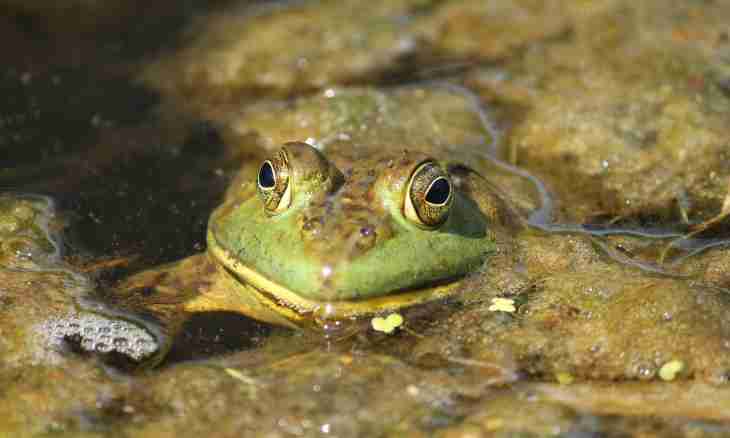Frogs treat Amphibia, their life is very closely connected with water. In Russia two species of frogs - grassy and ostromordy most often meet. Breath of these animals is carried out through lungs and also through skin.
As the frog breathesLungs at a frog are underdeveloped therefore both in water, and on air she breathes, generally the surface of the body. Through lungs the breath at frogs is made as follows: the bottom of a mouth falls, through open nostrils air gets inside. Then belly muscles squeeze out outside residue of the fulfilled air, at the same time the mouth floor continues to fall. After that nostrils are closed, the bottom of a mouth rises and pushes air in lungs.
Having gathered an air reserve, the frog dives into water. Oxygen from lungs begins to be absorbed slowly in blood. It allows it to remain under water long enough. After the oxygen reserve from lungs is spent, the frog comes up on a surface. However she can receive oxygen and through skin. Experts conducted researches, finding out, what is the time the frog can be in water, without coming up. It turned out that the toad can spend in water about eight days, and a grass frog - nearly a month.
In order that skin of a frog well passed oxygen, her surface always has to be damp. Therefore the Amphibia living on the land love crude habitats. They hunt insects in twilight and at night, and hide from the sun under a grass and leaves in the afternoon. Frogs to the touch seem cold as through thin skin water easily evaporates and cools its surface. Body temperature of these Amphibia is always several degrees less than ambient temperature.
Through skin water also gets into an organism of a frog. The frog does not need to drink water, it is enough to it to nestle a paunch on the damp earth, plants or to bathe in dew.
As the frog wintersBreath through skin is of very great importance as they winter for grass frogs, being dug in in silt at the bottom of reservoirs. Ponds do not freeze to the bottom even at very low temperature in the winter therefore frogs do not freeze too. At approach of fall the Amphibia fall into a condition of anabiosis at which all vital processes slow down. The amount of oxygen necessary to them goes down, and skin breath it appears to a frog enough.
As all cold blooded, frogs differ in the lowered power exchange. Their activity will depend directly on ambient temperature.
Ostromordy frogs, unlike grassy, winter on the land. They are killed under stones, snags, leaves, into mouse and mole holes. Hibernation of Amphibia continues 150-200 days and depends on duration of the cold period. In the winter their considerable part perishes, to spring of frogs there are only 2-5%.

